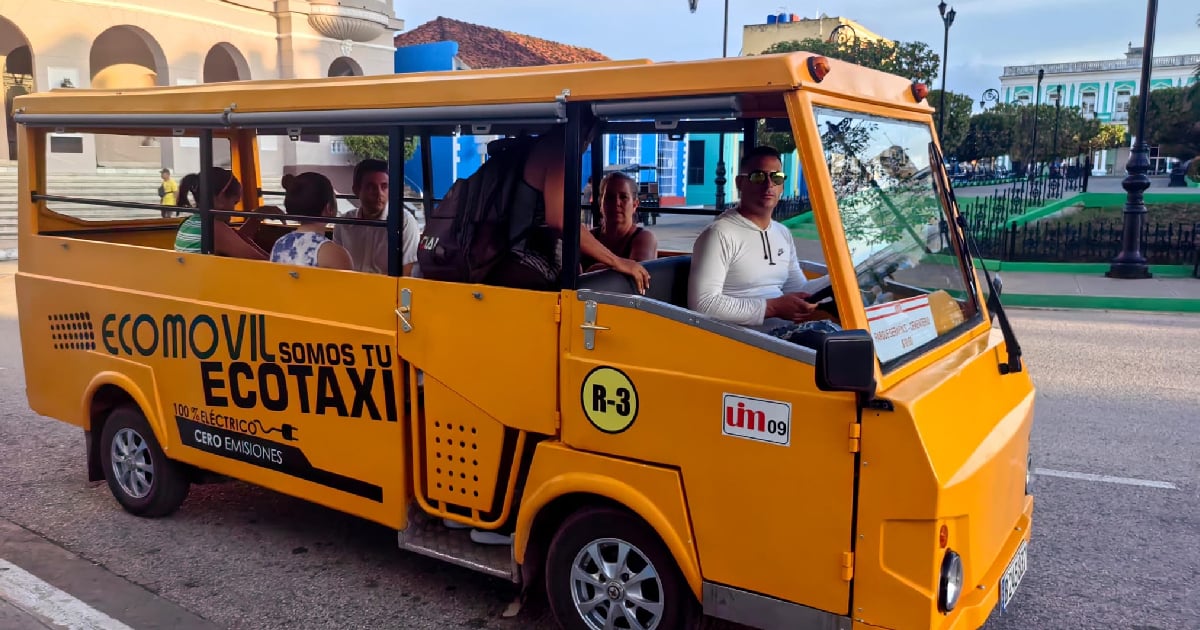Amid the ongoing fuel crisis and the deterioration of public transport, the Cuban government is banking on alternative means like the first five electric minibuses—or "ecomobiles"—now navigating the streets of Sancti Spíritus province. Constructed at the Coronel Francisco Aguiar Industrial Military Enterprise (EMI) plants, these vehicles are fully locally manufactured, a factor that directly contributes to job creation, according to Eduardo Rodríguez Dávila, the Cuban Minister of Transport, in a Facebook post.
These minibuses join electric taxis, another proposal rolled out in recent years across the country to meet short-distance transport demand and alleviate passenger congestion in buses. According to the head of the Ministry of Transport (Mitrans), service monitoring results show a positive impact from this mode of transportation, with each vehicle making between 10 and 17 trips daily, depending on the route and battery condition.
The minister also announced that the assembly of fifty new units is currently underway, financed by the Mitrans Transport Sustainability Fund. "We are working on 50 chassis (the internal framework that provides support, rigidity, and shape). Thirty-five are ready, and we're working on the structures to be assembled onto them. Fronts, roofs, sides, seats, seat bases, and floors, all made of fiberglass, with 100 percent national manufacturing," he noted.
With the expectation of delivering the vehicles by August, the official highlighted that the project is being developed by a specialized brigade, consisting of welders, assistants, workshop mechanics, automotive mechanics, electricians, painters, and a team leader. "During our last government visit last week, we agreed to organize the procurement of the next components and include solar panels for electric charging to make it truly clean and autonomous technology," Rodríguez previewed.
As a testament to the effectiveness of this transport, the first prototype named VES002 was seen on the streets of Sancti Spíritus last April, featuring a capacity for 11 passengers, the driver, and the conductor.
Recently, the government announced the creation of high-tech electric tricycles equipped with integrated solar panels. These will be dedicated to passenger transportation and will extend the regime's propaganda network with a built-in communication system, featuring two screens and an audio setup to disseminate topics of social interest.
Electric Minibuses and Sustainable Transport in Cuba
With the introduction of electric minibuses in Sancti Spíritus, many questions arise regarding their impact and future developments. Below are some frequently asked questions and their answers.
How many trips do these electric minibuses make each day?
Each electric minibus makes between 10 and 17 trips daily, depending on the route and the battery status.
What materials are used in the construction of these electric minibuses?
The minibuses are constructed using fiberglass for fronts, roofs, sides, seats, seat bases, and floors, all of which are 100 percent nationally manufactured.
What is the government's plan for integrating solar panels?
The government plans to include solar panels for electric charging to create a clean and autonomous technology for these vehicles.
